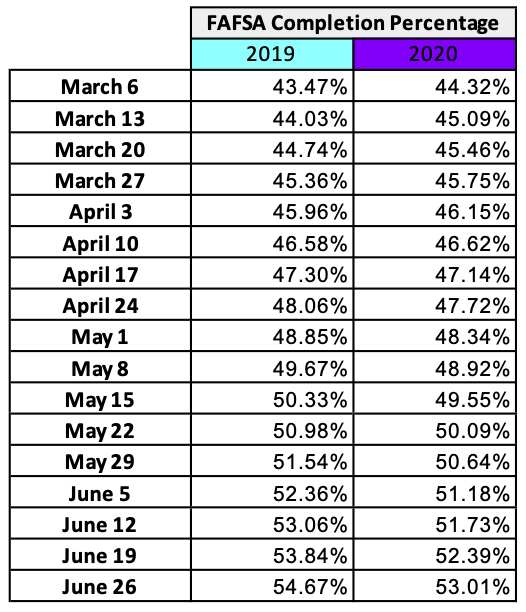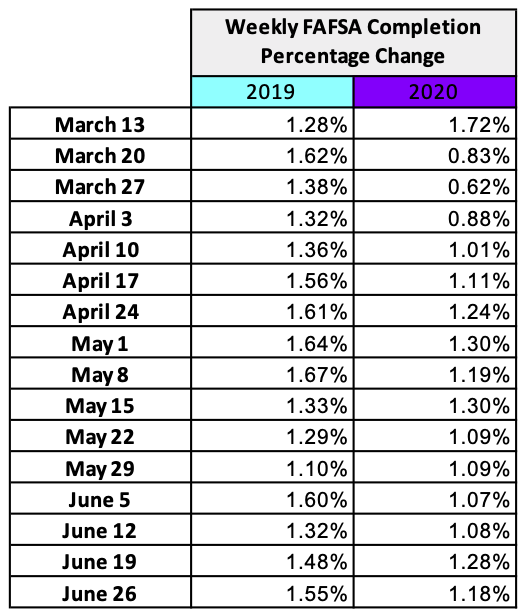Last updated Friday, July 31, 2020
FAFSA completion by Alabama’s high school class of 2020 fell as schools closed due to COVID-19 and students had limited access to school counselors, career coaches, and other resources, according to an analysis by Alabama Possible. This reflects national trends noted by the National College Attainment Network.
From March 6 to June 26, the percent change in year-over-year completions decreased by 5.01 percentage points (1.96% → -3.05%). 1,469 fewer high school seniors completed FAFSAs by June 26 compared to the same time last year. Of note, there are 1,133 fewer high school seniors this year, according to ALSDE enrollment data.
On March 6, the class of 2020 had 1.96% more FAFSA completions than last year’s class. A steady decline in completion percentage change occurred as school closures were announced on March 13. As of June 26, the class of 2020 has 3.05% fewer FAFSA completions than last year’s class.
Using data from the U.S. Department of Education and the Alabama State Department of Education, Alabama Possible estimates that 53.01% of this senior class completed a FAFSA through the end of June, compared to 54.67% of last year’s senior class at that time.
Before school closures due to COVID-19, this year’s senior class was ahead of last year’s senior class. FAFSA completion rates began to lose ground during the first month of school closures. Challenges presented by school closures include decreased access to high school counselors, career coaches, internet connection, and other college-going resources.
This year, FAFSA completion percentages increased by 1.72% from March 6 to March 13. However, once schools closed the week of March 16, the week-to-week percentage increases plummeted and only began to rise again during the week of March 28.
While week-to-week percentage increases are not as high as last year’s increases, percentage increases returned to relatively typical levels as educators and counselors received support and adjusted to alternative methods of instruction and counseling at the end of the school year. However, June and July will likely see a decline as educators and students are out of school for summer break.
Sources: U.S. Department of Education’s Office of Federal Student Aid; Alabama State Department of Education Enrollment Reports
*Our calculations use FAFSA completion data from the U.S. Department of Education’s Office of Federal Student Aid which excludes any public and private school with fewer than five FAFSA completions. This means that FAFSA completion in Alabama might be slightly higher than what is represented above. Additionally, our calculations use senior enrollment data from the Alabama State Department of Education which only includes public schools.






